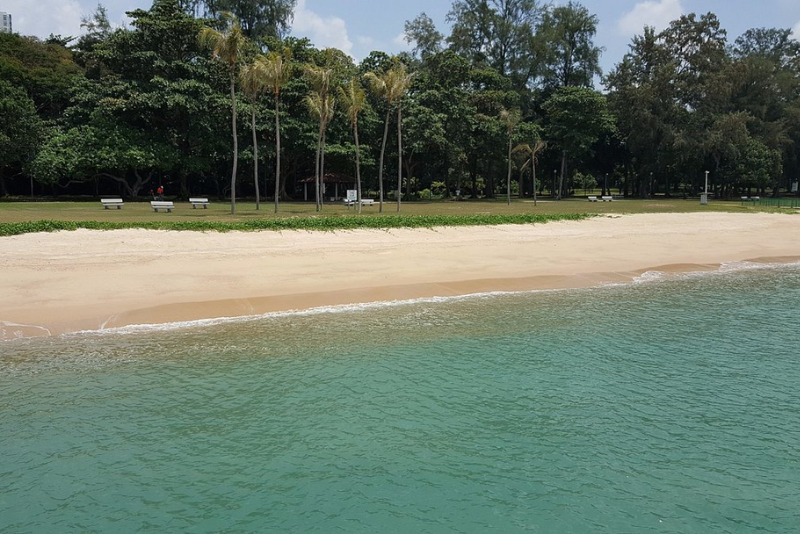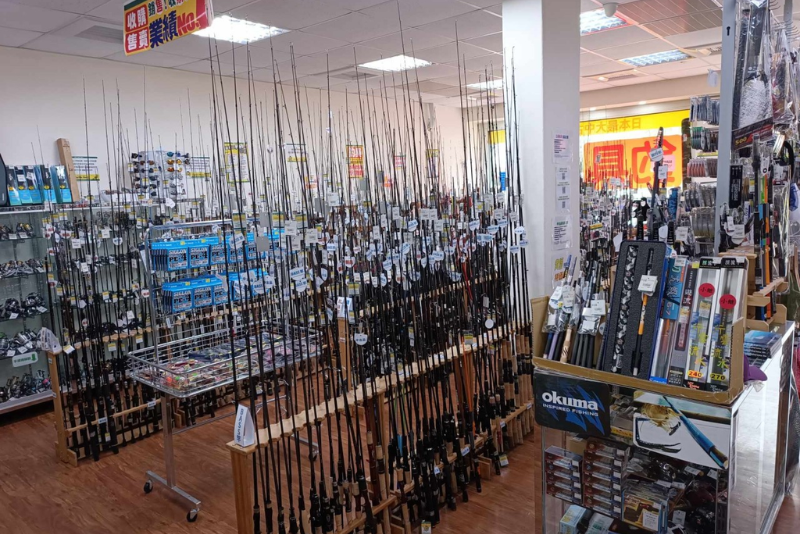Some may dismiss fishing as an activity reserved for uncs and boomers, but that’s simply an unfair misconception. Fishing can be simultaneously peaceful and exhilarating. Yes, paradoxical, but it’s exactly that.. Read, meditate, have a H2H (heart to heart) with your buddy… then reel that sucka in. Don’t knock it till you’ve tried it!
And as an ex-fishing village, you best bet Singapore has something to show for it. Bedok Jetty is by far the most popular salt-water jetty with anglers reeling in catches reaching up to (brace yourselves) 80kg!
So if you just so happen to be looking for a new hobby, then let me get you started!
Where is Bedok Jetty and how to get there
Contrary to its name, Bedok Jetty is actually located within East Coast Park (ECP), area F. The concrete jetty sits along the long coastline, stretching out 250m over the ocean. Perfect for walking dramatically into the sunset or recreating that iconic titanic moment.
If you want to drive in, make sure to use carpark F1 as it’s the closest carpark to the jetty. While you can drive to the vicinity, the jetty itself is a pedestrian-only area, so you will need to walk over. Luckily, it’s a pleasant walk with ample greenery and a cool oceanside breeze.
For those taking public transport, you can take the train to Bedok MRT Station, then board Bus 31 or 196 and alight near the park entrance.
Tides: knowing when to cast for the big haul

Time and tide wait for no fish — so if you want a bite, you’ll need to play the tides to your advantage. The general rule of thumb is that rising and falling tides are prime time for fishing, as the currents bring the fish in. When the water moves, it brings nutrients and smaller fish, which gets the bigger ones ready to feast.
Sure, there are other factors to consider, such as water temperature, weather, and even solunar activity. But let’s leave that to the marine biologists. This tide table has already done the heavy lifting and calculated the best times for you to fish. All you have to do is show up and cast!
The essential gear: don't leave home without it

Here is a list of essentials so you’ll know exactly what to get. The last thing you want is to be hustled on your first trip!
- Rod: 7–12 ft stiff rod (6–6.6 ft works for bait fishing)
- Reel: 2500–5000 sized spinning reel
- Line: 10–20 lb monofilament (for beginners)
- Hooks: Sizes 1/0–4/0 depending on bait and fish
- Sinkers: Size 6 for bottom fishing
- Rig: Long snood for bottom feeders
- Bait: Live (shrimp) or cut (squid, fish)
- Landing net & rod holder for hands-free fishing
- Extras: Towel, cooler, small chair
💡 Pro tip: Keep it light if it’s you’re just starting out. You can always upgrade your gear after you land your first catch bragging rights.
Beginners’ technique: fishing 101

If you’ve never fished before, don’t stress! It’s really not rocket-science. Here’s a simple few steps to get you started.
- Baiting up: Secure your chosen bait firmly onto the hook. If you’re using live bait, make sure it’s hooked in a way that allows it to move naturally without dying immediately.
- Jigging: Toss a short line and jig up and down to mimic prey and entice the fishies. This method is quite popular among recreational fishers at Bedok Jetty and is really effective for catching smaller fishes such as tambans, kunnings and more.
- Surf casting: The best part! Hold the rod firmly and swing it up and over your shoulder, and then flick it forward with a smooth, firm motion, releasing the line as you flick. Feel the satisfying whir of the unravelling reel before the end hits the water.
With surf casting, anglers like doing it at the end of the jetty where they can cast out further into the sea. This is where you can expect the bigger catches such as queenfish, mackerel, and occasionally even stingrays and small sharks! - The wait: Once your line is in the water, wait for that tug. Keep your line taut, not too tight, not too loose. If you see slight movements, as Treebeard likes to say, “don’t be hasty”. Wait until you feel a firm, strong tug, then pull back sharply (this is called setting the hook).
- Reeling: Once the hook is set, start reeling in steadily. Keep the line taut and don’t pull when the fish is fighting. This tires the fish out so that when it slows, you immediately lift and reel, bringing it closer to shore. Be patient and avoid jerking the rod as that might break or dislodge the line!
If you want the jetty to remain a pleasant place to fish, then do your part and follow their rules. Don’t cast beyond 30 meters (just estimate) of the jetty and likewise, watercrafts will keep the same distance to avoid any accidents.
Also, net fishing may feel tempting, but if you don’t want to be a nuisance to your fellow anglers AND the environment, keep that net out of the jetty!
What to bring along on your fishing trip
Apart from the basic equipment, it’s important to be well-prepared for the trip. Especially if you don’t want to come out of it looking cooked and crispy.
- Sun Protection: An umbrella or wide-brimmed hat, sunglasses, and high-SPF sunscreen are non-negotiable. The sun out on the water can be intense.
- Hydration and Snacks: Singapore’s heat is unforgiving. Bring water and a light snack stash.
- Comfort Essentials: A small hand-held or battery-powered neck fan and a comfortable chair can be a game-changer if you want to fish in comfort.
- Entertainment: The wait can be long. A good book, a deck of cards, or an engaging podcast can keep you entertained.
💡Pro tip: Pop over to some of these CDC voucher cafes for a well-deserved refuel after your fishing adventures!
If you’re feeling a little too hobo for the cafes, take a 10 minute drive over to Old Airport Road hawker center, where (trust me) no one’s judging.
Frequently Asked Questions
Is Bedok Jetty open 24/7?
Yes, Bedok Jetty is open 24/7. However do take note of temporary closures or weather alerts.
Do I need a fishing license to fish at the jetty?
No, a fishing license is not required for recreational fishing from public jetties in Singapore.
What should I do with my rubbish?
I like to live by this phrase — leave the area cleaner than you found it! Bring a plastic bag for all your fishing waste and food wrappers, and dispose of it properly in a bin. A little thoughtfulness can go a long way!
(Feature photo from: CNA)








